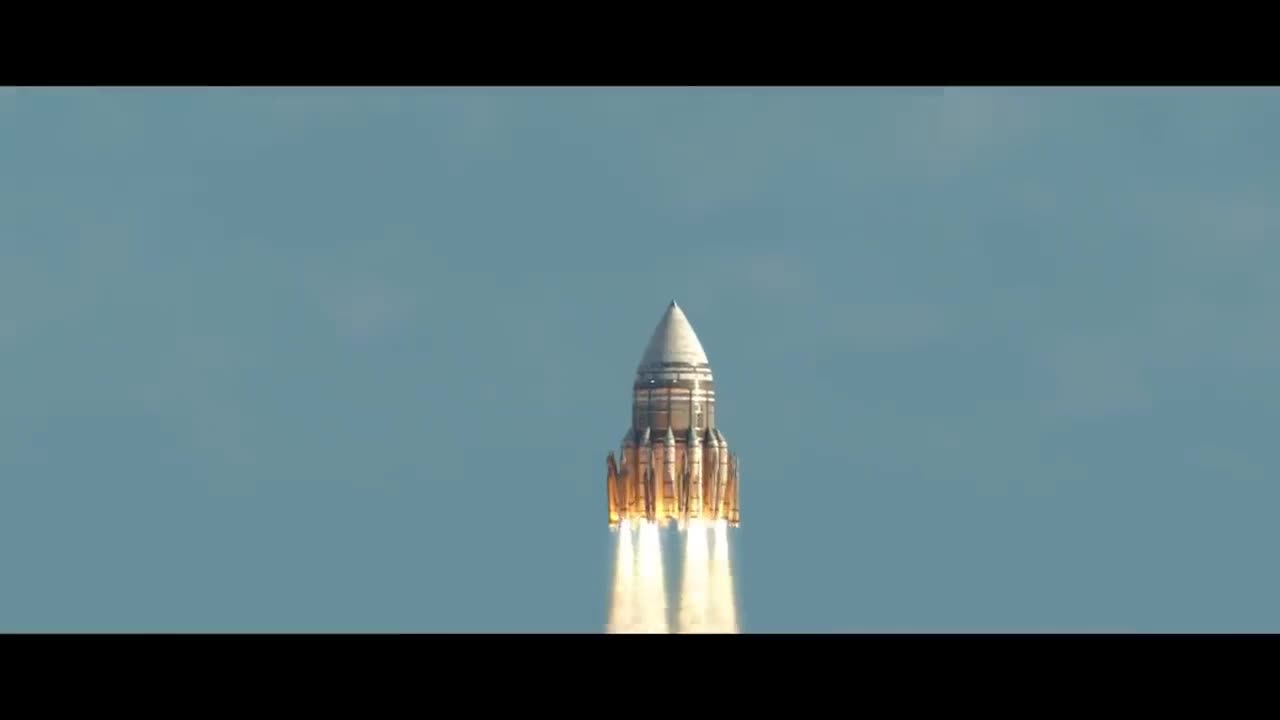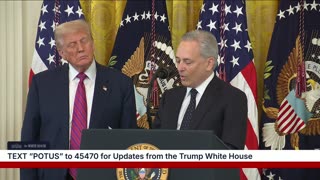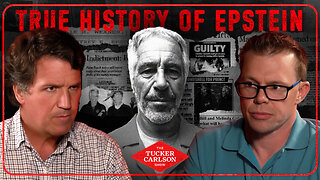Premium Only Content

Super Orion - Nuclear Pulse Propulsion Rocket
Project Orion was a study conducted between the 1950s and 1960s by the United States Air Force, DARPA, and NASA for the purpose of measuring the efficacy of a starship directly propelled by a series of explosions of atomic bombs behind the craft—nuclear pulse propulsion. Early versions of this vehicle were proposed to take off from the ground; later versions were presented for use only in space. Six non-nuclear tests were conducted using models. The project was eventually abandoned for multiple reasons, including the Partial Test Ban Treaty, which banned nuclear explosions in space, and concerns over nuclear fallout.
The idea of rocket propulsion by combustion of an explosive substance was first proposed by Russian explosives expert Nikolai Kibalchich in 1881, and in 1891 similar ideas were developed independently by German engineer Hermann Ganswindt. Robert A. Heinlein mentions powering spaceships with nuclear bombs in his 1940 short story "Blowups Happen". Real life proposals of nuclear propulsion were first made by Stanislaw Ulam in 1946, and preliminary calculations were made by F. Reines and Ulam in a Los Alamos memorandum dated 1947. The actual project, initiated in 1958, was led by Ted Taylor at General Atomics and physicist Freeman Dyson, who at Taylor's request took a year away from the Institute for Advanced Study in Princeton to work on the project.
The Orion concept offered high thrust and high specific impulse, or propellant efficiency, at the same time. The unprecedented extreme power requirements for doing so would be met by nuclear explosions, of such power relative to the vehicle's mass as to be survived only by using external detonations without attempting to contain them in internal structures. As a qualitative comparison, traditional chemical rockets—such as the Saturn V that took the Apollo program to the Moon—produce high thrust with low specific impulse, whereas electric ion engines produce a small amount of thrust very efficiently. Orion would have offered performance greater than the most advanced conventional or nuclear rocket engines then under consideration. Supporters of Project Orion felt that it had potential for cheap interplanetary travel, but it lost political approval over concerns about fallout from its propulsion.
The Partial Test Ban Treaty of 1963 is generally acknowledged to have ended the project. However, from Project Longshot to Project Daedalus, Mini-Mag Orion, and other proposals which reach engineering analysis at the level of considering thermal power dissipation, the principle of external nuclear pulse propulsion to maximize survivable power has remained common among serious concepts for interstellar flight without external power beaming and for very high-performance interplanetary flight. Such later proposals have tended to modify the basic principle by envisioning equipment driving detonation of much smaller fission or fusion pellets, in contrast to Project Orion's larger nuclear pulse units (full nuclear bombs) based on less speculative technology.
A concept similar to Orion was designed by the British Interplanetary Society (B.I.S.) in the years 1973–1974. Project Daedalus was to be a robotic interstellar probe to Barnard's Star that would travel at 12% of the speed of light. In 1989, a similar concept was studied by the U.S. Navy and NASA in Project Longshot. Both of these concepts require significant advances in fusion technology, and therefore cannot be built at present, unlike Orion.
From 1998 to the present, the nuclear engineering department at Pennsylvania State University has been developing two improved versions of project Orion known as Project ICAN and Project AIMStar using compact antimatter catalyzed nuclear pulse propulsion units, rather than the large inertial confinement fusion ignition systems proposed in Project Daedalus and Longshot.
source text : wikipedia.org
link : https://en.wikipedia.org/wiki/Project_Orion_(nuclear_propulsion)
-
 LIVE
LIVE
Dr Disrespect
5 hours ago🔴LIVE - DR DISRESPECT - NEW AAA BATTLE ROYALE ON UNREAL ENGINE 5 #OTG #OFFTHEGRID
2,904 watching -
 2:52:15
2:52:15
Barry Cunningham
3 hours agoWATCH LIVE: PRESIDENT TRUMP SIGNS LAWS ON CRYPTO AND ENDS NPR, PBS, & USAID!
26K16 -
 44:02
44:02
The White House
3 hours agoPresident Trump Participates in a Signing Ceremony for S.1582 GENIUS Act
21.3K21 -
 LIVE
LIVE
LadyDesireeMusic
2 hours ago $0.04 earnedLive Piano Renditions | Make Ladies Great Again | Live Piano Requests TONS to choose from
125 watching -
 4:13:45
4:13:45
Viss
5 hours ago🔴LIVE - Winning with Tactics & Outplay The Competition - How To With Viss!
5.69K1 -
 1:09:46
1:09:46
Jeff Ahern
2 hours ago $0.20 earnedFriday Freak out with Jeff Ahern
12.9K7 -
 LIVE
LIVE
Spartan
2 hours agoSpartan - Pro Halo Player for OMiT | Scrims vs FaZe @ 4 EST + Ranked
22 watching -
 1:40:47
1:40:47
WolfsDenBoxing
1 hour agoStreaming Fights: New Wave or Distraction
2.35K -
 57:12
57:12
Crypto Power Hour
9 hours ago $0.23 earnedThe GENIUS Act & The Clarity Act Pass… Whats The Impact?
8.93K5 -
 2:47:39
2:47:39
Tucker Carlson
4 hours agoTucker Carlson and Darryl Cooper on the True History of Jeffrey Epstein and Ongoing Cover-Up
43.9K50